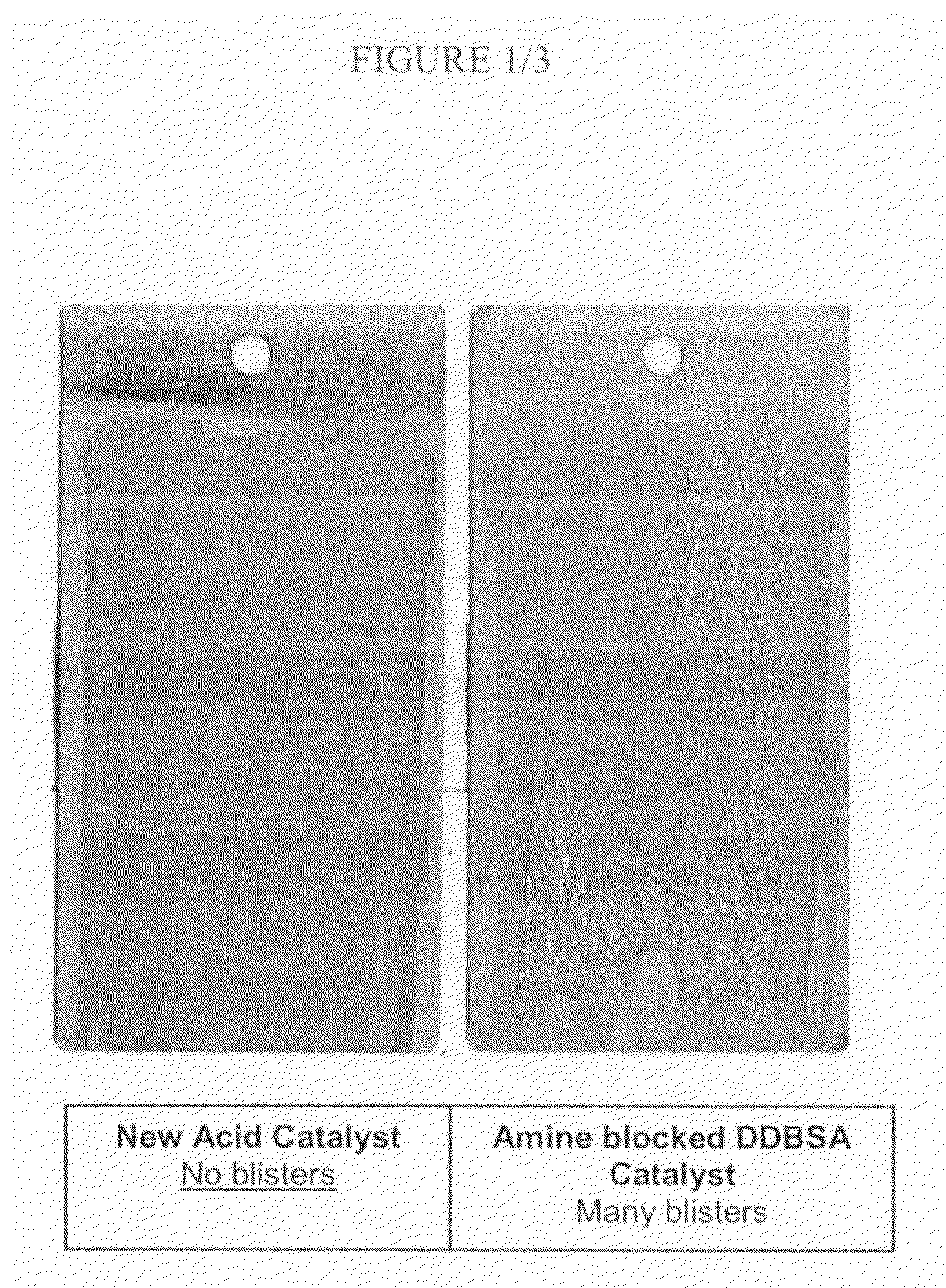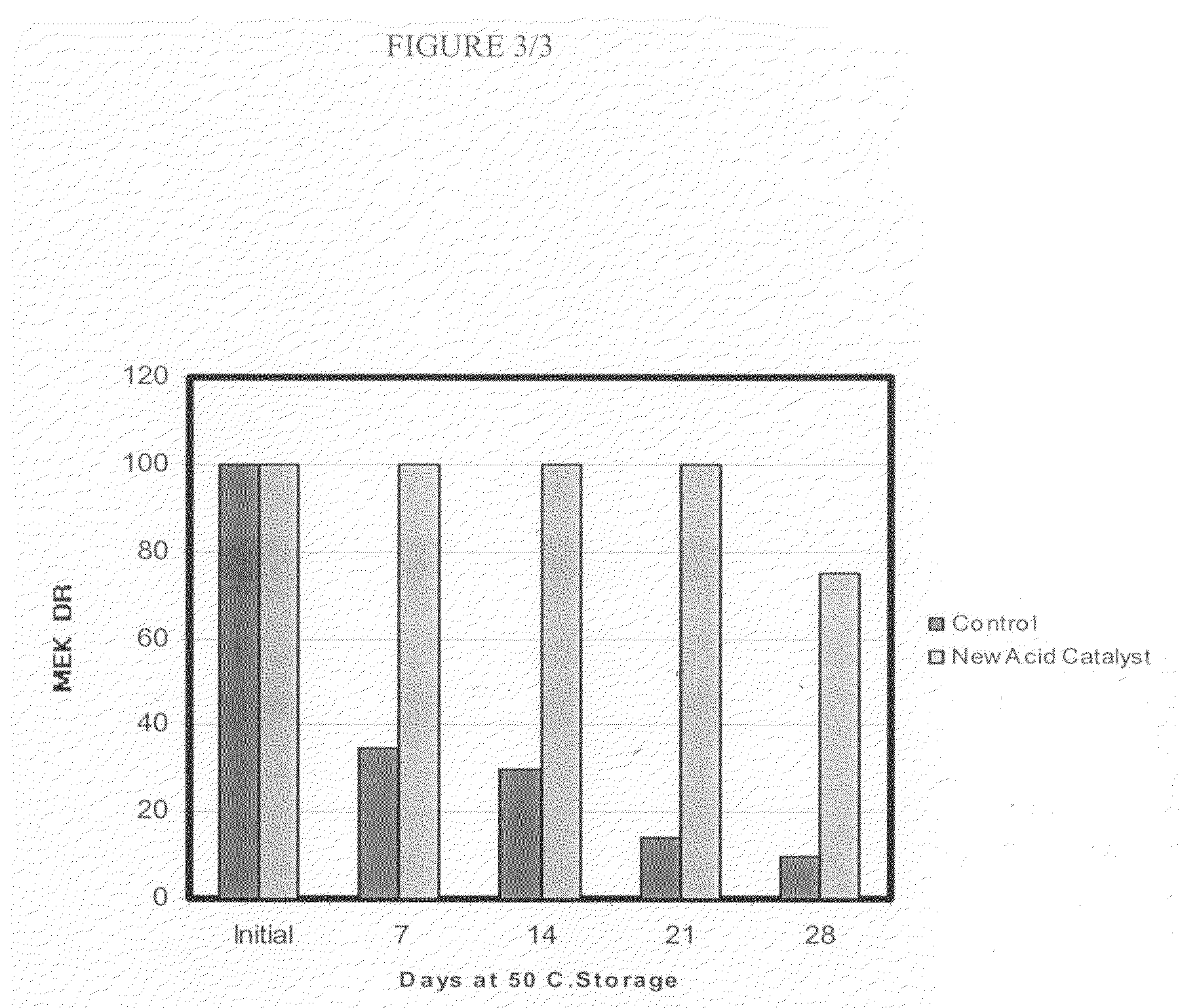Sulfonate esters as latent acid catalysts
a technology of latent acid catalysts and esters, which is applied in the field of sulfonate esters, can solve the problems of unsuitable use, high curing temperature, and very slow cure rate, and achieve the effects of improving salt spray characteristics and flexibility, superior hardness, and preventing popping
- Summary
- Abstract
- Description
- Claims
- Application Information
AI Technical Summary
Benefits of technology
Problems solved by technology
Method used
Image
Examples
examples
Preparation of Sulfonate Esters
[0119]The sulfonate esters can be made in any of the ways known to those skilled in the art. For example, several esters based on didodecyl naphthalene sulfonic acid (DDDNSA), dinonyl naphthalene sulfonic acid (DNNSA), dodecyl benzene sulfonic acid (DDBSA), dinonyl naphthalene disulfonic acid (DNNDSA), toluene sulfonic acid (p-TSA) and methane sulfonic acid (MSA) were prepared for use in the practice of the present invention.
[0120]The following Examples (1-76) presented in Tables A-F, respectively, of the esters were synthesized using well known methods known to those skilled in the art.
[0121]Esters Based on Didodecyl Naphthalene Sulfonic Acid (DDDNSA)
TABLE ASulfonic acidAlkyl EsterExampleComponentComponent1Didodecyl naphthalene sulfonic acidCyclohexyl2Didodecyl naphthalene sulfonic acidHexyl3Didodecyl naphthalene sulfonic acidBis-hexylene4Didodecyl naphthalene sulfonic acidDodecyl5Didodecyl naphthalene sulfonic acidOctyl6Didodecyl naphthalene sulfonic...
PUM
| Property | Measurement | Unit |
|---|---|---|
| temperature | aaaaa | aaaaa |
| polymeric | aaaaa | aaaaa |
| weight | aaaaa | aaaaa |
Abstract
Description
Claims
Application Information
 Login to View More
Login to View More - R&D
- Intellectual Property
- Life Sciences
- Materials
- Tech Scout
- Unparalleled Data Quality
- Higher Quality Content
- 60% Fewer Hallucinations
Browse by: Latest US Patents, China's latest patents, Technical Efficacy Thesaurus, Application Domain, Technology Topic, Popular Technical Reports.
© 2025 PatSnap. All rights reserved.Legal|Privacy policy|Modern Slavery Act Transparency Statement|Sitemap|About US| Contact US: help@patsnap.com



